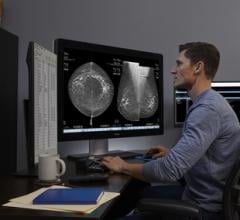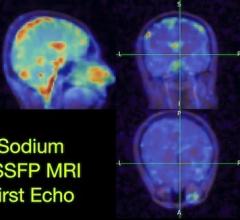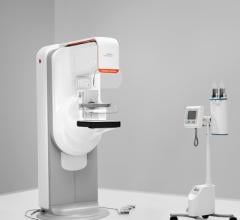
May 21, 2015 — Magnetic resonance imaging (MRI) provides important information about a woman’s future risk of developing breast cancer, according to a new study published in Radiology. Researchers said the findings support an expanded role for MRI in more personalized approaches to breast cancer screening and prevention.
The new study focused on the relationship between imaging features and cancer risk in women who already face a high risk of breast cancer because of family history, genetic mutations associated with the disease or other factors. In prior studies, dense breast tissue, or tissue that contains more fibroglandular tissue than fatty tissue, has been linked to an increased likelihood of breast cancer development.
“To date, it’s been difficult to assess the future risk of breast cancer for women, so there is a strong desire in the oncology community to identify ways to better determine this risk,” said study co-author Habib Rahbar, M.D., a breast imaging expert at Seattle Cancer Care Alliance and assistant professor at the University of Washington. “While breast density is loosely associated with the risk of developing breast cancer, it is unclear whether it or other imaging features can improve upon current risk assessment methods.”
Contrast-enhanced MRI is one potential tool that is already used as an imaging option to supplement mammography in high-risk women. Current American Cancer Society guidelines recommend that women with a 20 percent or greater lifetime risk of developing breast cancer undergo annual screening breast MRIs in addition to routine annual screening mammography.
In the new study, Rahbar and colleagues reviewed screening breast MR images from high-risk women 18 years or older with no history of breast cancer who were screened at their institution from January 2006 to December 2011.
The researchers looked for any associations between cancer risk and imaging features, including breast density and background parenchymal enhancement (BPE). BPE is a phenomenon in which areas of normal background breast tissue appear white, or enhanced, on the MR images. The precise reasons for this enhancement are not clear, but previous research has suggested a possible link to cancer risk.
The results showed that women who displayed elevated amounts of BPE on MRI were nine times more likely to have a breast cancer diagnosis during the study follow-up interval than those who exhibited no or minimal BPE. In contrast, mammographic density appeared to have no significant relationship to cancer risk in the study group.
The findings suggest that BPE could potentially help physicians better tailor screening and management strategies to each individual’s breast cancer risk. Currently, women at high risk for breast cancer have various options, including supplementing screening mammography with MRI, prevention therapy with tamoxifen — a drug that blocks estrogen activity in the breast — and preventive mastectomies. If validated in larger studies, BPE could provide more information to help guide these important decisions.
“MRI could be used in a broader group of women to determine who most needs supplemental screening based on their BPE levels,” Rahbar said. “This is important as we move into an era of more personalized medicine.”
The researchers are working to validate the findings in a larger group of patients and are planning additional research to understand more about why BPE may serve as a biomarker of breast cancer risk. One theory is that BPE is related to areas of inflammation associated with early stages of the disease.
“Breast cancer needs a supportive environment to grow, and recent research suggests that areas of inflammation are particularly conducive for such growth,” Rahbar said.
For more information: www.radiologyinfo.org


 December 17, 2025
December 17, 2025 









